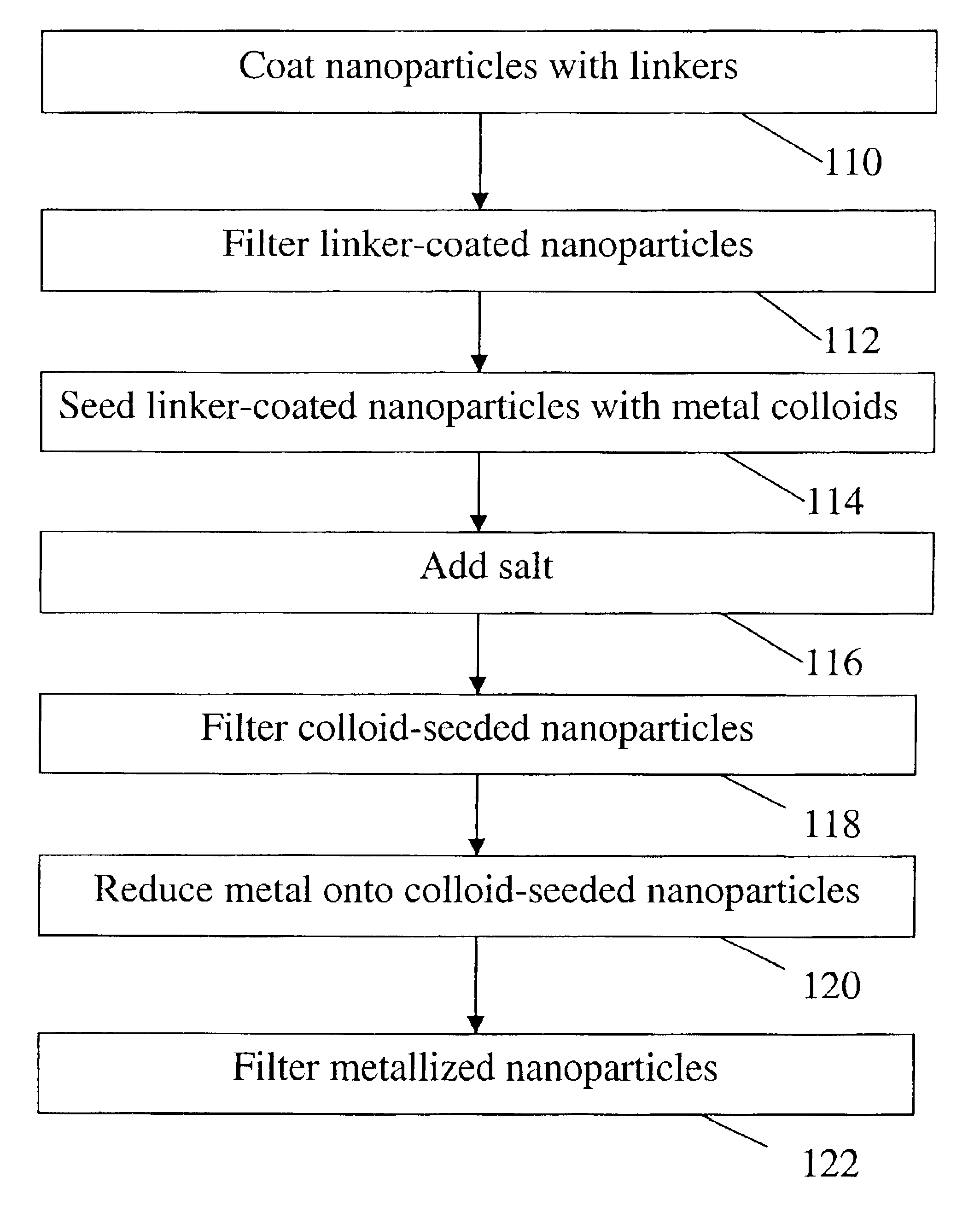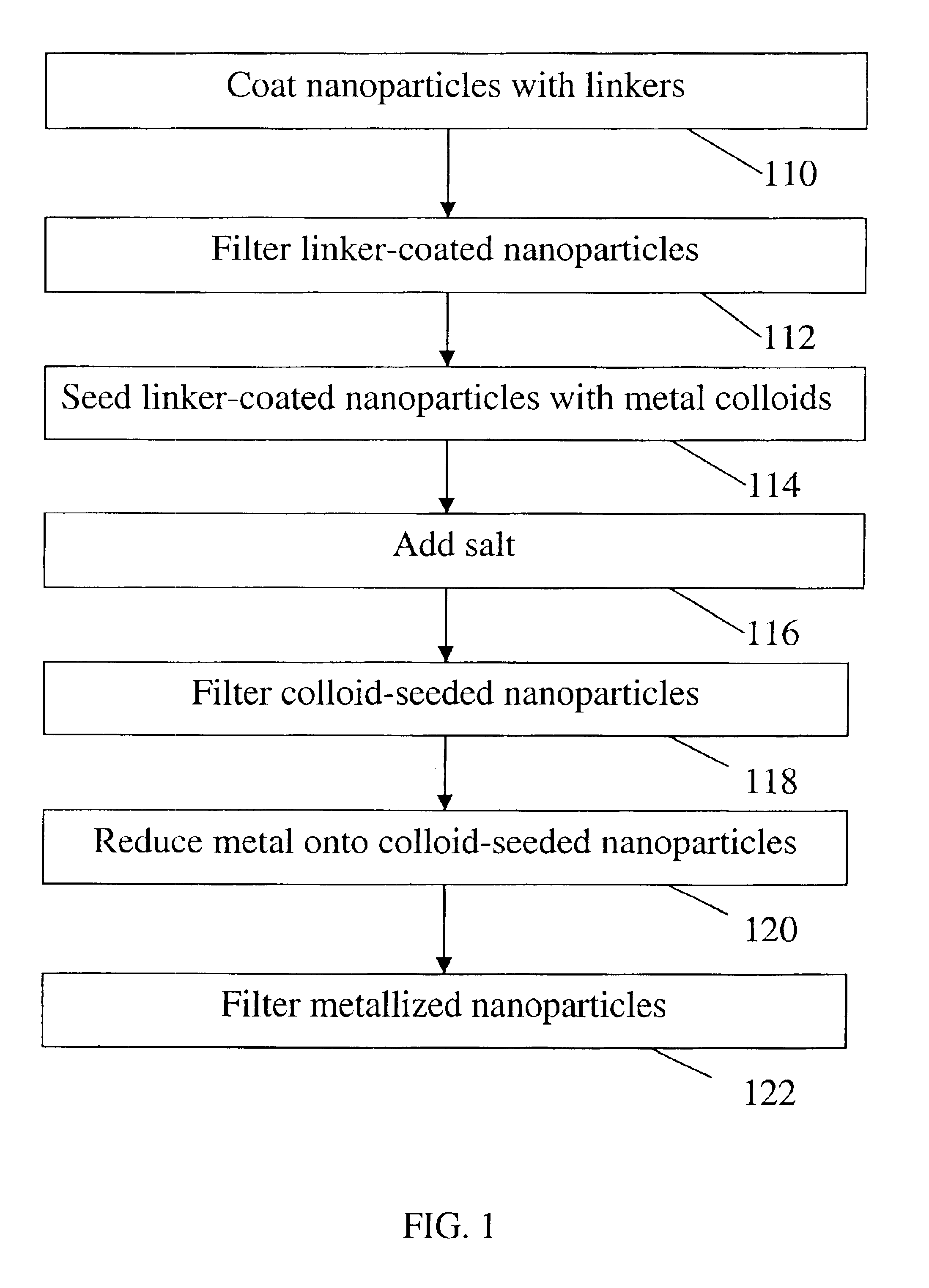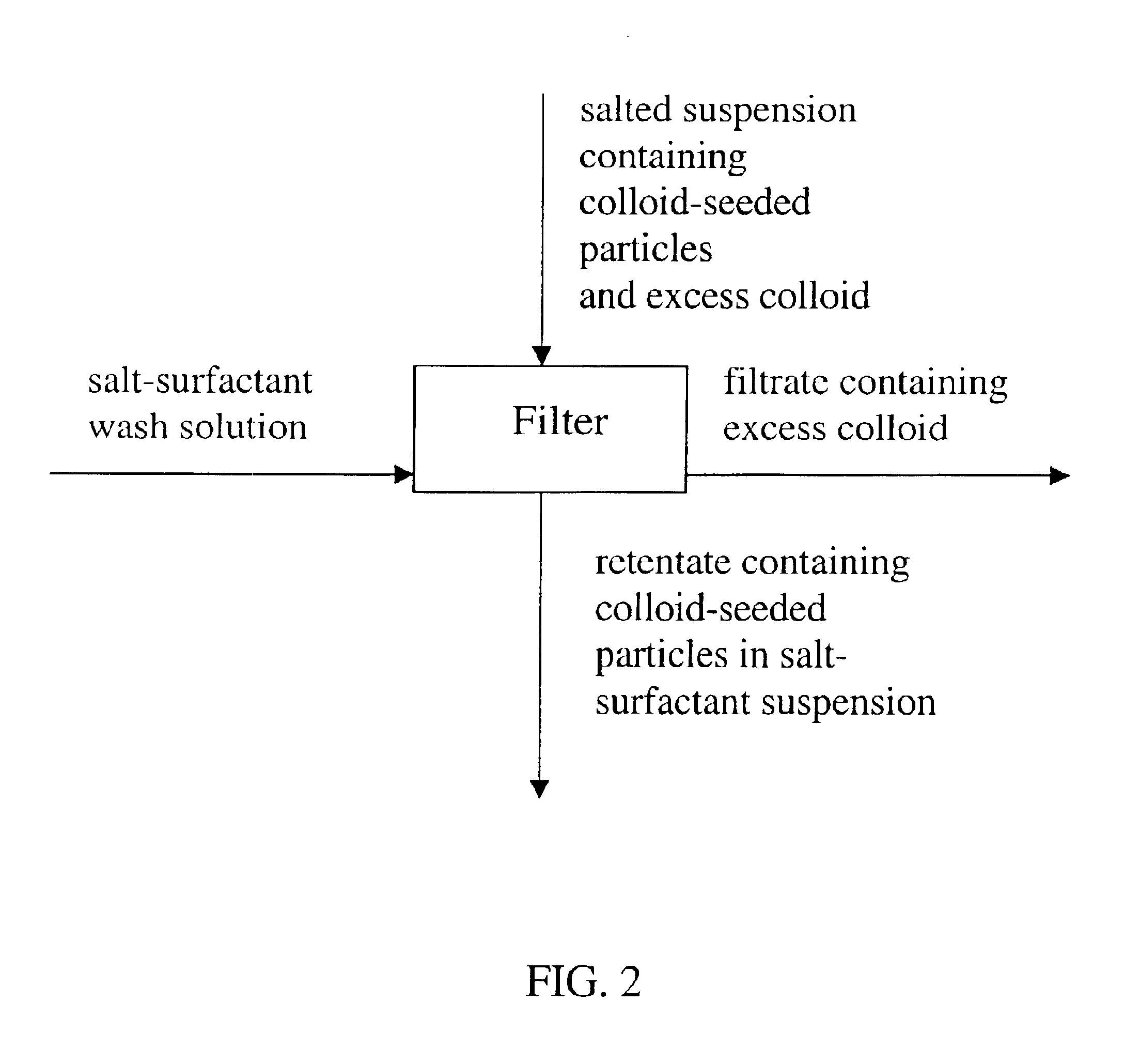Method for scalable production of nanoshells using salt assisted purification of intermediate colloid-seeded nanoparticles
a nanoparticle and colloid-seeded technology, applied in the direction of separation processes, transportation and packaging, coatings, etc., can solve the problems of large particle size, large particle size, and reliance on bulk dielectric properties of materials
- Summary
- Abstract
- Description
- Claims
- Application Information
AI Technical Summary
Benefits of technology
Problems solved by technology
Method used
Image
Examples
example 1
Salt-Assisted Filtration Followed by Passivation of Free Linkers
I) Preparation of ‘Filtrate Gold Colloid’
[0083]1) Make THPC Gold Colloid by the standard method, such as disclosed in U.S. Pat. No. 6,344,272, and in S. Oldenburg, R. D. Averitt, S. Westcott, and N. J. Halas, “Nanoengineering of Optical Resonances”, Chemical Physics Letters 288, 243-247 (1998), which each incorporated herein by reference.[0084]2) Concentrate the Gold Colloid solution with the CFF (400 KDa filter) within 1 hour of synthesis and collect the filtrate in a clean vessel (the concentrated gold colloid can be discarded.)[0085]3) Allow the filtrate to age at room temp for 48-72 hours and then use or refrigerate (the filtrate solution will have reacted to form ‘filtrate gold colloid’.)
II) Preparation of Seed Solution[0086]1) Make monodisperse APTES functionalized silica particles by a standard method (e.g. Stober synthesis, commercial particles, etc.) such a method as disclosed herein. The silica particles shoul...
example 2
Salt-Assisted Filtration with Salt-Surfactant Wash Solution
[0118]I) Follow steps I and II in Example 1.[0119]II) In step III of Example 1 use the following wash solution: 5 L DI, 9 g NaCl and 50 g 10,000 MW PEG (1 mM.) Do not filter with the second wash solution (i.e. The seeds are left in NaCl / PEG solution after diafiltration.)[0120]III) Skip steps IV and V in Example 1[0121]IV) Follow steps VI through IIX in Example 1.
PUM
| Property | Measurement | Unit |
|---|---|---|
| Length | aaaaa | aaaaa |
| Length | aaaaa | aaaaa |
| Length | aaaaa | aaaaa |
Abstract
Description
Claims
Application Information
 Login to View More
Login to View More - R&D
- Intellectual Property
- Life Sciences
- Materials
- Tech Scout
- Unparalleled Data Quality
- Higher Quality Content
- 60% Fewer Hallucinations
Browse by: Latest US Patents, China's latest patents, Technical Efficacy Thesaurus, Application Domain, Technology Topic, Popular Technical Reports.
© 2025 PatSnap. All rights reserved.Legal|Privacy policy|Modern Slavery Act Transparency Statement|Sitemap|About US| Contact US: help@patsnap.com



